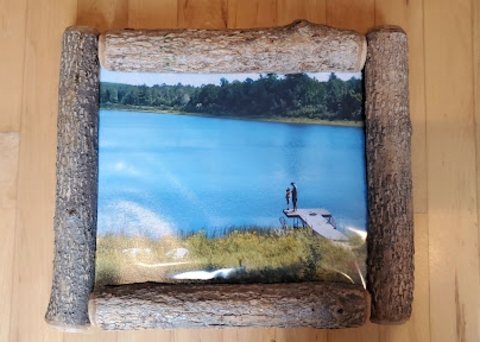This week the news has been filled with the sights and sounds of devastating tornadoes in Kentucky. Then last night Minnesota was battered by record-breaking high winds after record-breaking high temperatures yesterday. This weather is not normal and is one symptom of climate change.
If these events have you feeling down, you're not alone. It’s common for people who lose a beloved yard tree to mourn its loss, whether that loss is from high winds, insects and disease or old age. Further, if you’re feeling down about the prospects of a brown Christmas or the inability to ski in the now snowless landscape, that’s real. If you were more anxious about last night's storms because of the recent images and devastating stories from Kentucky, that’s reasonable. There are things you can do to help manage these feelings.
Understanding our feelings
Solastalgia is “the mental, emotional, or spiritual reaction of an individual, group, or community to the negative transformation of their environment.” Last summer some gardeners experienced solastalgia when they learned invasive jumping worms were changing their yards and gardens. Forest landowners affected by last summer's wildfires or drought might be experiencing solastalgia as they watch the transition of their woodlands to a new forest or ecosystem.
Ambiguous loss is an unclear loss without closure. The lack of clarity is based on something or someone being both here and not here at the same time, such as a missing person or the destruction of sentimental objects. Others may not recognize or understand the loss, and people may not be able to move forward in solving the original need or problem. In the changing rural landscape, loss of land, changing markets, and even relationships can be ambiguous losses that lead many to feel “stuck.” As we consider physical and psychological losses, we must also consider the role grief plays in them.
Disenfranchised grief is grief for the loss of something that may be minimized by others or for which there aren’t cultural norms around ritualizing that grief, so the grief may not be understood or taken seriously. Not everyone loves trees or has special memories about the tree shading your backyard playground. Not everyone is an avid gardener and mourns the loss of their hostas. Only some people are impacted by forest fires or droughts. But those experiences impact individuals, families, and communities and the feelings of grief that accompany these changes are real and should be recognized.
Frozen grief is a result of the ambiguity of not yet knowing whether or not any effort will be successful. This frozen grief can go on for years while various efforts are made to try and salvage aspects of the land. The uncertainty of the future of the land and its features does not allow people to fully grieve and move on. Instead, they may be consumed by a sense of dread about their trees, land, and the effects of climate change.
Anticipatory grief occurs upon realizing a loss is imminent, but before the loss has occurred. It’s very likely that many landowners feel a sense of anticipatory grief as climate change continues to impact the world around us. Processing these feelings
Sadly these feelings will continue to impact us as the effects of climate change continue to creep into daily life. Below are some tips on how to manage these feelings.
- Recognize your feelings, state them and help others recognize them.
- Create rituals to process these feelings. For example, create a memento or display a photo of the tree you’ve lost, the garden that is no more, or the forest that was damaged. Honor that memory, talk about and share what made these places special. These memories will live on; make them happy.
- Empower hope and agency. You’ve had a loss, when it’s safe and you have time, reflect on what went well and what could be improved. Take joy in thinking of the next tree you can plant. This is a time of change, create a change that you can enjoy for years to come.
- Embrace the nature-based human health benefits. The research is clear, being in nature can improve your mood, lower your blood pressure and offer time for physical activity. These benefits can be experienced if you’re removing invasive species, cleaning up a downed tree or replanting a forest. Remember to enjoy, embrace and intentionally include time in nature into your daily life.
- Build resiliency. Making meaning of loss helps build resilience, which in turn can help you move forward as you deal with more adversity and loss. Resilience grows in tough times.
Helping the trees
If you lost trees in last night's unusual storm:
- Because leaves are off and there are few insect or disease issues now, winter is one of the best times of year to prune trees. If you’re going to be cleaning up tree branches and pruning, be sure to prune correctly using this UMN Extension pruning resource.
- If you’re going to hire an arborist make sure they are certified and have insurance. The International Society of Arboriculture (ISA) has a list of certified arborists in Minnesota.
- If you are a woodland steward and lost a lot of trees in your forest consider a salvage harvest and call a forester. Stewardship plan writers and DNR Stewardship Foresters can be found on the DNR’s website.
- Read more about how to assess risk and adapt your woods to climate change by reading a chapter from the Woodland Stewardship textbook.
Sign-up here for UMN Extension Forestry’s monthly newsletter if you want to learn about timely forestry information like tree planting recommendations, safe pruning times, seasonal tree sales and great educational opportunities.


